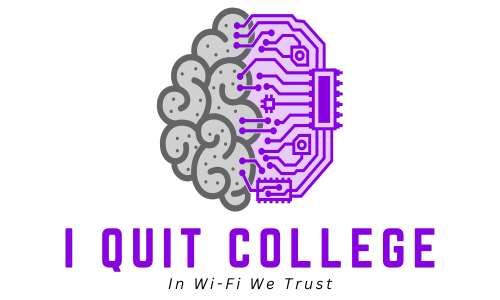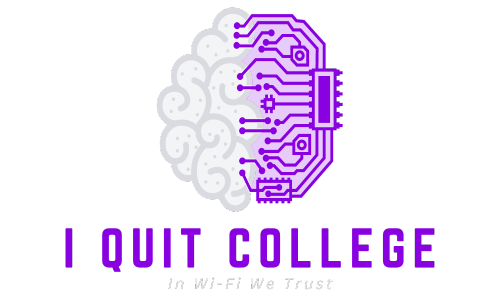Welcome to our guide on content marketing! In today’s digital marketing landscape, creating valuable and engaging content has become essential for businesses looking to attract and retain their target audience. Content marketing, at its core, is a strategic approach focused on developing and distributing content that is valuable, relevant, and consistent.
Content marketing encompasses various tactics and channels, including email marketing, social media marketing, SEO, PR, PPC, inbound marketing, and more. By implementing a well-rounded content marketing strategy, businesses can expect increased sales, cost savings, better customer loyalty, and even content-driven revenue.
In this guide, we will explore the role and importance of content marketing, the elements of a successful content marketing strategy, different types of content marketing, how content marketing works in the buyer journey, tips for creating a content marketing strategy, and examples of successful content marketing. So let’s dive in and discover the power of content marketing!
Key Takeaways:
- Content marketing is a strategic approach focused on creating and distributing valuable and relevant content.
- It is an integral part of various digital marketing tactics and can lead to increased sales and customer loyalty.
- A successful content marketing strategy involves defining target audiences, developing brand stories, and creating an action plan.
- There are various types of content marketing, such as online, social media, blogs, videos, and paid ads.
- Content marketing works by targeting different stages of the buyer journey to drive action and conversion.
The Role and Importance of Content Marketing
Content marketing plays a critical role in the modern marketing landscape. Unlike traditional promotional tactics, content marketing focuses on creating and delivering valuable and relevant content to the target audience. By doing so, businesses can effectively engage with their customers, build brand loyalty, and establish themselves as industry leaders.
One of the key benefits of content marketing is its ability to create a strong online presence. By consistently producing valuable content that addresses the needs and challenges of the target audience, businesses can attract and retain customers. This helps in building brand visibility and awareness, ultimately driving customer engagement and loyalty.
Moreover, content marketing allows businesses to establish themselves as trusted sources of information and expertise. By providing valuable and insightful content, businesses can showcase their industry knowledge and position themselves as thought leaders. This helps in building brand credibility and authority, making it easier to connect with customers on a deeper level.
Content marketing also plays a crucial role in driving customer action. By creating valuable and engaging content, businesses can effectively influence the customer’s decision-making process. Valuable content not only educates and informs but also inspires and motivates customers to take the desired action, such as making a purchase or subscribing to a newsletter.
Overall, content marketing is a powerful marketing strategy that allows businesses to create valuable and engaging content to connect with their target audience. By doing so, they can build brand presence, attract and engage customers, and ultimately drive business growth and success.
Elements of a Successful Content Marketing Strategy
A successful content marketing strategy consists of several key elements that work together to achieve business objectives. By incorporating these elements into your strategy, you can create valuable and engaging content that resonates with your target audience.
1. Audience Personas
Defining your target audience is essential for crafting content that meets their specific needs and interests. By creating audience personas, you can develop a deep understanding of your target customers, including their demographics, pain points, and preferences.
2. Brand Story
“Your brand story is what sets you apart from your competitors. It is the narrative that communicates your values, purpose, and unique selling proposition to your audience.”
Your brand story shapes how your audience perceives and connects with your brand. It helps create a consistent brand image and messaging across all your content, building brand loyalty and trust.
3. Content Marketing Mission
Having a clear content marketing mission statement is crucial for guiding your content creation and distribution efforts. It outlines the purpose and objectives of your content marketing strategy, ensuring that your content aligns with your overall business goals.
4. Business Case
Understanding the business case for content marketing is essential for securing the necessary resources and support. A well-defined business case demonstrates the potential return on investment (ROI) and the strategic value of content marketing for your business.
5. Action Plan
An action plan outlines the specific steps and tactics you will take to implement your content marketing strategy. It includes details such as content topics, formats, distribution channels, and success metrics.
| Element | Description |
|---|---|
| Audience Personas | Defining target audience demographics, pain points, and preferences. |
| Brand Story | Creating a consistent brand image and messaging across all content. |
| Content Marketing Mission | Defining the purpose and objectives of the content marketing strategy. |
| Business Case | Understanding the ROI and strategic value of content marketing. |
| Action Plan | Outlining the steps and tactics for implementing the content marketing strategy. |
Types of Content Marketing
Content marketing can take various forms depending on the platforms and channels used. Here are some of the most popular types of content marketing:
- Online Content Marketing: This involves creating web pages and optimizing them for search engines. It includes SEO techniques, keyword research, and creating valuable content that attracts organic traffic.
- Social Media Content Marketing: Utilizing different social media platforms and formats to engage with the audience. It involves creating content specifically tailored to each platform, such as Facebook posts, Instagram stories, and Twitter threads.
- Infographic Content Marketing: Presenting information in a visually appealing and easy-to-understand format. Infographics use illustrations, charts, and graphs to deliver complex data in a visually engaging manner.
- Blog Content Marketing: Providing a platform for written content that can be educational, informative, or promotional. Blog posts allow businesses to share insights, industry trends, and tips with their audience.
- Podcast Content Marketing: Creating audio content for listeners. Podcasts are a popular medium for discussing industry topics, conducting interviews, and sharing expertise with a loyal audience.
- Video Content Marketing: Utilizing videos to convey messages and engage with the audience. Video content can be in the form of tutorials, product demos, storytelling, or vlogs, depending on the brand and target audience.
- Paid Ad Content Marketing: Using paid advertisements with content to reach a broader audience. Paid ads can be displayed on search engine results pages, social media platforms, or websites, targeting specific demographics and interests.
Each type of content marketing has its own benefits and purposes, and businesses can choose the ones that align with their goals and target audience.
How Content Marketing Works
Content marketing is a powerful strategy that aims to guide consumers through the different stages of the buyer journey, ultimately driving action. By strategically targeting each stage, businesses can create awareness, build trust, and convert leads into customers.
Top of the Funnel (TOFU)
At the top of the funnel (TOFU), content marketing focuses on creating awareness and educating the audience. This stage addresses broad pain points and common questions that potential customers may have. By providing valuable and relevant information, businesses can establish themselves as experts in their industry and capture the attention of their target audience.
Middle of the Funnel (MOFU)
In the middle of the funnel (MOFU), content marketing aims to help prospects consider the brand’s solution. Here, businesses provide more in-depth information, addressing specific pain points and showcasing their expertise. By providing valuable content that addresses the needs and challenges of the audience, businesses can build trust and establish themselves as a reliable source of information.
Bottom of the Funnel (BOFU)
In the bottom of the funnel (BOFU), content marketing focuses on conversion. At this stage, businesses provide information on pricing, demos, case studies, and testimonials to help prospects make the final decision. Businesses also address objections and provide solutions to potential customer concerns. By providing the information needed to make an informed decision, businesses can drive action and convert leads into paying customers.
By targeting each stage of the buyer journey with relevant and valuable content, businesses can enhance their content marketing efforts and maximize their chances of success.
Creating a Content Marketing Strategy
Developing a content marketing strategy involves several steps. By following a structured approach, businesses can ensure that their content aligns with their goals and effectively engages their target audience. Here are the key elements of creating a successful content marketing strategy:
Audience Analysis
To create relevant and valuable content, businesses must first understand their target audience. Conducting thorough audience analysis helps identify their needs, preferences, and pain points. By gaining insights into their demographics, behavior, and interests, businesses can tailor their content to resonate with the target audience and drive engagement.
Content Planning
Once the target audience is identified, businesses should create a comprehensive content plan. This plan outlines the topics, formats, and distribution channels for their content. It helps ensure that the content is aligned with the overall marketing strategy and addresses the specific needs of the audience. A well-structured content plan acts as a roadmap for content creation and distribution.
Content Creation
The success of a content marketing strategy depends on the quality and relevance of the content created. Businesses should focus on producing high-quality and engaging content that aligns with their strategy and meets the needs of their target audience. Whether it’s blog articles, videos, podcasts, or infographics, the content should provide value and solve the audience’s pain points.
Content Distribution
Content distribution is crucial for reaching the target audience effectively. Businesses should consider various distribution channels, such as websites, social media platforms, email newsletters, and industry publications. By utilizing a mix of owned, earned, and paid media, businesses can maximize the reach and impact of their content.
Content Promotion
Even the most valuable content will go unnoticed if not properly promoted. Businesses should develop a promotion strategy to ensure their content reaches the target audience. This may involve social media advertising, influencer partnerships, email marketing, or search engine optimization techniques. Promoting content through the right channels helps increase visibility and engagement.
Content Analytics
Measuring the performance and effectiveness of content is essential for making data-driven decisions and improvements. Businesses should utilize content analytics tools to track key metrics, such as website traffic, engagement rates, conversion rates, and social media reach. Analyzing this data helps businesses understand what content resonates with the audience and enables them to optimize their strategy accordingly.
By following these steps and continuously refining their approach, businesses can create a robust and effective content marketing strategy that drives engagement, builds brand awareness, and generates valuable results.
Examples of Successful Content Marketing
Successful content marketing examples demonstrate various strategies and tactics used by businesses to engage with their audience and achieve marketing goals. By employing different types of content and storytelling techniques, brands can effectively connect with their target market and create a lasting impact.
- Brand storytelling: Brand storytelling involves crafting a compelling narrative around the brand’s values, mission, and history. By evoking emotions and resonating with the audience, brands can foster a deeper connection and build trust. For example, Nike’s “Dream Crazy” campaign featuring Colin Kaepernick showcased their commitment to social justice and sparked conversations around important issues.
- Educational content: Providing valuable and informative content helps position a brand as a thought leader and a trusted resource. Brands can create blog posts, how-to guides, and tutorials to educate their audience. A great example is HubSpot’s comprehensive marketing blog, which offers insights, tips, and resources to help marketers improve their skills and knowledge.
- Thought leadership: Establishing thought leadership involves sharing unique perspectives, industry insights, and expert opinions. By showcasing expertise and authority, brands can become go-to sources of information. Adobe’s “CMO Insights” blog series features interviews and articles from marketing leaders, offering valuable insights and perspectives on the latest industry trends.
- User-generated content: Inviting customers to create and share content related to the brand not only increases brand advocacy but also fosters a sense of community. GoPro’s “Photo of the Day” campaign encourages users to submit their best photos and videos captured using GoPro cameras, showcasing the brand’s capabilities through real user experiences.
- Interactive content: Engaging the audience through interactive elements such as quizzes, polls, and calculators can enhance the user experience and increase dwell time. BuzzFeed’s “Which Disney Princess Are You?” quiz went viral, driving massive engagement and social sharing, while providing entertainment and personalization.
These successful content marketing examples demonstrate the power of storytelling, educational content, thought leadership, user-generated content, and interactive features in capturing audience attention, building brand loyalty, and achieving marketing objectives.
| Categories | Examples |
|---|---|
| Brand Storytelling | Nike’s “Dream Crazy” campaign featuring Colin Kaepernick |
| Educational Content | HubSpot’s comprehensive marketing blog |
| Thought Leadership | Adobe’s “CMO Insights” blog series |
| User-generated Content | GoPro’s “Photo of the Day” campaign |
| Interactive Content | BuzzFeed’s “Which Disney Princess Are You?” quiz |
Conclusion
Content marketing is a powerful tool for businesses to attract and engage with their target audience. By creating valuable and engaging content, businesses can build brand awareness and establish themselves as industry leaders. They can drive customer action and achieve significant business growth and success in the digital marketing landscape.
A well-executed content marketing strategy incorporates audience analysis to understand the needs and preferences of the target audience. It also includes brand storytelling to create a compelling narrative that resonates with the audience. Content creation focuses on producing high-quality and relevant content that serves the audience’s needs. Distribution and promotion ensure that the content reaches the target audience through various channels and platforms.
Furthermore, content analytics measures the performance and effectiveness of the content strategy, providing insights for informed decision-making and continuous improvement. By incorporating these elements into their content marketing strategy, businesses can effectively engage with their target audience, establish a strong brand presence, and drive desired customer actions, ultimately leading to business growth and success.
FAQ
What is content marketing?
Content marketing is a strategic marketing approach focused on creating and distributing valuable, relevant, and consistent content to attract and retain a clearly defined audience.
How does content marketing benefit businesses?
By implementing a content marketing strategy, businesses can expect increased sales, cost savings, better customer loyalty, and even content-driven revenue.
What is the role and importance of content marketing?
Content marketing goes beyond traditional promotional tactics and focuses on providing relevant and valuable content to the target audience. It helps businesses engage with their customers, build brand loyalty, and establish themselves as industry leaders.
What are the key elements of a successful content marketing strategy?
The key elements include defining target audience personas, developing a brand story and positioning, creating a content marketing mission statement and an owned media value proposition, building a business case, and outlining an action plan.
What are the different types of content marketing?
Content marketing can take various forms such as online content marketing, social media content marketing, infographic content marketing, blog content marketing, podcast content marketing, video content marketing, and paid ad content marketing.
How does content marketing work?
Content marketing works by targeting different stages of the buyer journey. It creates awareness, educates the audience, builds trust, and drives conversion through relevant and valuable content.
What is involved in creating a content marketing strategy?
Developing a content marketing strategy involves analyzing the target audience, creating a content plan, producing high-quality content, distributing and promoting it through various channels, and analyzing its performance.
Can you provide examples of successful content marketing?
Successful content marketing examples include brand storytelling, educational content, thought leadership content, user-generated content, and interactive content.






